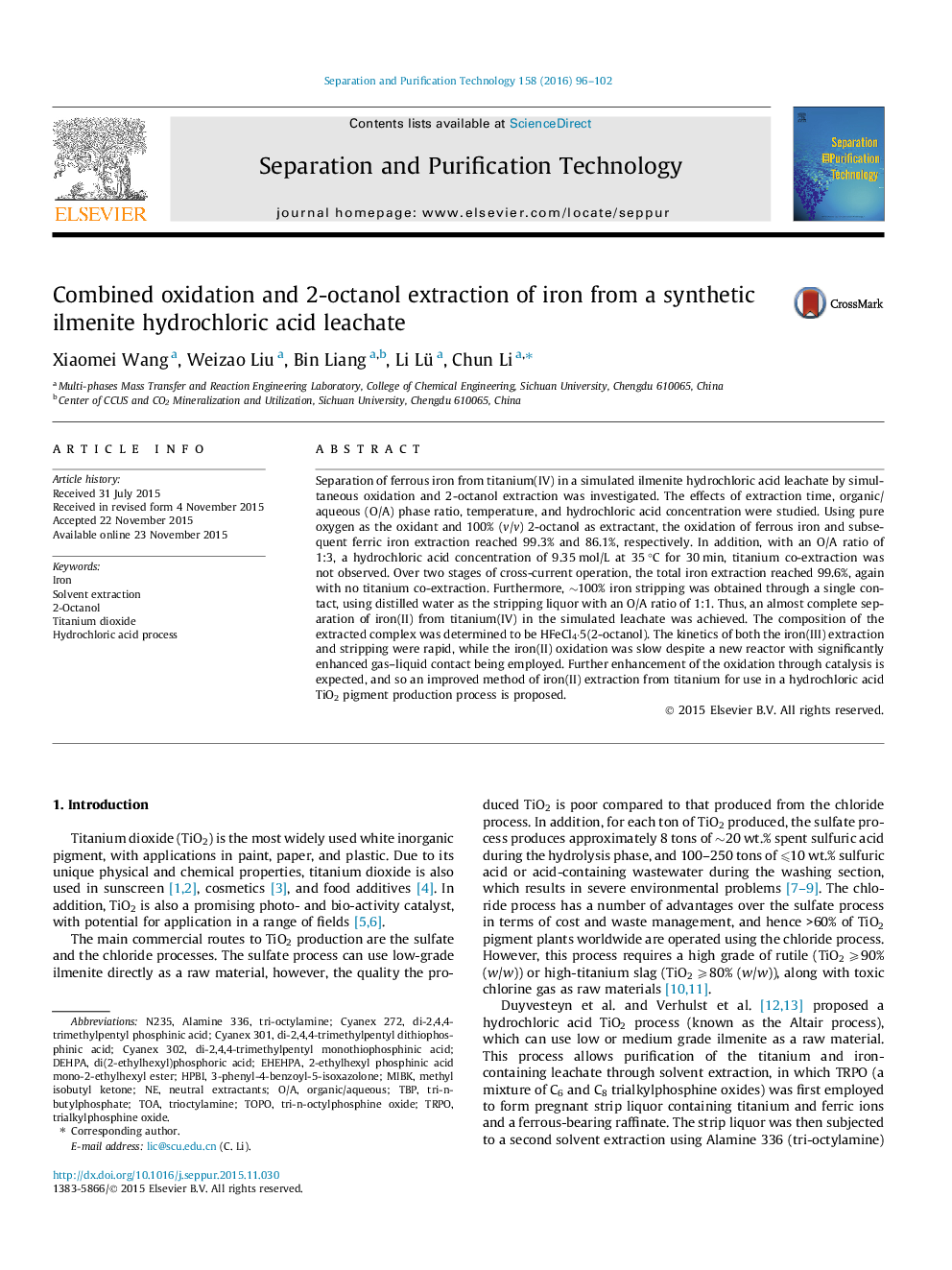| Article ID | Journal | Published Year | Pages | File Type |
|---|---|---|---|---|
| 640200 | Separation and Purification Technology | 2016 | 7 Pages |
•A novel method of almost complete separation of Fe(II) and Ti(IV) is reported.•The effects of various process factors and extraction mechanisms were investigated.•The composition of the extracted complex was HFeCl4·5(2-octonol).
Separation of ferrous iron from titanium(IV) in a simulated ilmenite hydrochloric acid leachate by simultaneous oxidation and 2-octanol extraction was investigated. The effects of extraction time, organic/aqueous (O/A) phase ratio, temperature, and hydrochloric acid concentration were studied. Using pure oxygen as the oxidant and 100% (v/v) 2-octanol as extractant, the oxidation of ferrous iron and subsequent ferric iron extraction reached 99.3% and 86.1%, respectively. In addition, with an O/A ratio of 1:3, a hydrochloric acid concentration of 9.35 mol/L at 35 °C for 30 min, titanium co-extraction was not observed. Over two stages of cross-current operation, the total iron extraction reached 99.6%, again with no titanium co-extraction. Furthermore, ∼100% iron stripping was obtained through a single contact, using distilled water as the stripping liquor with an O/A ratio of 1:1. Thus, an almost complete separation of iron(II) from titanium(IV) in the simulated leachate was achieved. The composition of the extracted complex was determined to be HFeCl4·5(2-octanol). The kinetics of both the iron(III) extraction and stripping were rapid, while the iron(II) oxidation was slow despite a new reactor with significantly enhanced gas–liquid contact being employed. Further enhancement of the oxidation through catalysis is expected, and so an improved method of iron(II) extraction from titanium for use in a hydrochloric acid TiO2 pigment production process is proposed.
